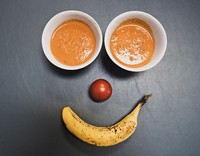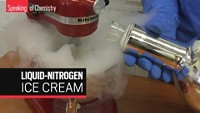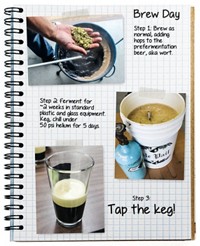Advertisement
Grab your lab coat. Let's get started
Welcome!
Welcome!
Create an account below to get 6 C&EN articles per month, receive newsletters and more - all free.
It seems this is your first time logging in online. Please enter the following information to continue.
As an ACS member you automatically get access to this site. All we need is few more details to create your reading experience.
Not you? Sign in with a different account.
Not you? Sign in with a different account.
ERROR 1
ERROR 1
ERROR 2
ERROR 2
ERROR 2
ERROR 2
ERROR 2
Password and Confirm password must match.
If you have an ACS member number, please enter it here so we can link this account to your membership. (optional)
ERROR 2
ACS values your privacy. By submitting your information, you are gaining access to C&EN and subscribing to our weekly newsletter. We use the information you provide to make your reading experience better, and we will never sell your data to third party members.
Education
Newscripts
Science Friction with Bob Wolke
April 14, 2008
| A version of this story appeared in
Volume 86, Issue 15
I have a 36-oz plastic bottle of Heinz ketchup with a wide cap that is flat on top, so the bottle can be stood on end. (Heinz calls it their Top-Down bottle.) Inside this flip-open cap is a nozzle through which one can squeeze out a stream of ketchup.
DO NOT TRY THIS AT HOME! The other day, I took the bottle out of the refrigerator, where it had been standing cap up, and noticed that it was running low, so I shook it sharply, cap down, to force the ketchup into the neck. (Newton's First Law: "Ketchup in motion will continue in motion until stopped by the cap of a bottle.") I then opened the flip-top, squeezed some out onto my plate, closed the flip-top, and stood the bottle on the counter "Top-Down," so the ketchup would stay in the neck in case I needed more.
About 10 minutes later when I did need more, I flipped open the cap, and before I could even squeeze the bottle ... whoosh! A gusher of ketchup erupted from the bottle as if from a fireman's hose and kept on gushing no matter how I turned it (including, unfortunately, toward my face). It didn't stop until the bottle was empty.
What happened? I'll let you ponder the forces acting in this system before I explain them at the end of this column.
In my former incarnation as a food writer, I found that few nonscientists seem to understand GAS PRESSURE (hint, hint). People know how to cope with solids and liquids, but not gases, because aside from putting air in a tire, they have never had occasion to manipulate them.
For example, most people know that a pressure cooker cooks foods faster, but few know the reason: The high water vapor pressure inside the vessel—about 15 psi above atmospheric—raises the liquid's boiling temperature to about 250 °F. It's not the high pressure that cooks the food fast, as some believe; it's the high temperature.
In recent years, a method of cooking at reduced pressure, and hence reduced temperature, has been showing up in avant-garde restaurant kitchens. It is called sous vide, French for "under vacuum." The food is placed in a plastic (usually Cryovac) pouch from which most of the air is subsequently pumped out and the pouch submerged for several hours in a fixed-temperature circulating water bath that may be set as low as 125 °F. Prepared in this way, foie gras, for example, retains its exquisitely unctuous texture, losing only about 5% of its fat, compared with 30–50% in conventional cooking.
But of course, no matter how hard a "vacuum pump" may labor, it can never achieve a true vacuum. So if I may be so bold as to emend the French term, it is not sous vide, but sous pression réduit. And therein lies the confusion, because what most people call a vacuum, we chemists refer to as reduced pressure. And how can a vacuum contain gas pressure? Aren't they opposites?
Food writers have stumbled all over themselves trying to understand what's going on in sous vide cooking. An example from the Aug. 14, 2005, New York Times: "The [food] was vacuum-packed with 20 lb of pressure per square centimeter." (Aside from the confounded terminology and units, I'd hardly call 129 psi a vacuum package. In fact, I'd expect it to explode.)
And from another Times article, "The atmospheric pressure created during the vacuum-packing process also promotes osmosis among the contents of the bag." (Huh?)
Sous vide cooking must be done very carefully because at reduced temperatures and oxygen levels, Clostridium botulinum bacteria can flourish, generating their deadly botulin toxin. For meats and fish, the temperature window falls between about 125 and 145 °F. Above 145 °F, the proteins begin to denature and toughen, which defeats the whole purpose of the method's gentleness. And below 125 °F, bacterial growth can be dangerous.
So when preparing your daily foie gras by the sous vide method, please make sure that the temperature of your water bath is accurately controlled.
About my KETCHUP ERUPTION: As the bottle stood on the counter "Top-Down," the air in the space above the ketchup began to warm, building up pressure. When I opened the cap, the ketchup was propelled out by that pressure, which kept the "ammunition" in firing position in the neck of the bottle until it had all been expelled and the pressure had been relieved.
Boy, was my face red!
Bob Wolke can be reached at sciencefriction.wolke@gmail.com.






Join the conversation
Contact the reporter
Submit a Letter to the Editor for publication
Engage with us on Twitter